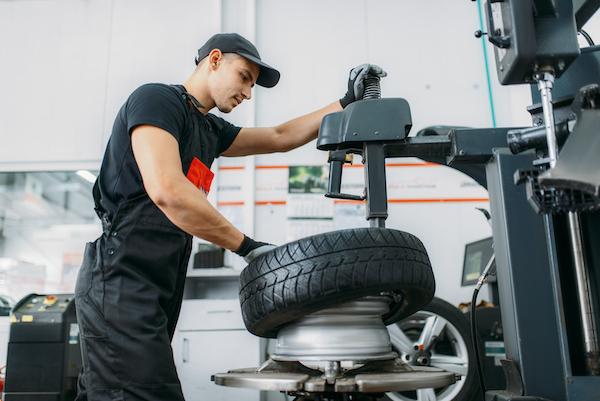Reliable Tire Shop Morris: Your Location for Quality Tires and Services
Reliable Tire Shop Morris: Your Location for Quality Tires and Services
Blog Article
Tire Solution: The Influence of Weather
When it comes to guaranteeing ideal efficiency and security on the roadway, recognizing the influence of weather problems on tire solution is essential. In this discussion, we will explore the intricate relationship in between weather condition problems and tire solution, losing light on the value of weather-specific tire upkeep methods and considerations.
Warm and Tire Efficiency
When revealed to heats, tires experience modifications in performance that can substantially impact vehicle safety and security and handling. The warmth produced from extended driving or hot weather condition conditions causes the tire rubber to soften, leading to reduced tread life and enhanced wear. As the rubber becomes softer, the tire's grasp when driving decreases, influencing stopping ranges and general traction. In severe situations, too much warm can even create tire blowouts, presenting a severe security risk to the vehicle and its owners.
Furthermore, heats can accelerate the process of tire aging, triggering the rubber to deteriorate faster. This can lead to fractures, protrudes, and various other forms of damages that compromise the architectural integrity of the tire. To alleviate the effects of warmth on tire performance, drivers must frequently check their tire pressure, turn tires to ensure also use, and evaluate for any type of indications of damages. In addition, using tires especially designed to hold up against high temperatures can assist keep ideal efficiency and safety and security when traveling.
Cold Weather Condition Results
Cold climate conditions can have a considerable effect on tire efficiency and security. As temperature levels decline, tire rubber can set, leading to decreased grip on icy or snow-covered roadways. In cold weather, tires might additionally shed atmospheric pressure more rapidly, which can impact managing and gas effectiveness. Furthermore, chilly temperatures can cause tire sidewalls to stiffen, increasing the danger of damage from potholes or various other roadway dangers.
To alleviate the impacts of cold weather on tires, it is critical to consistently inspect tire pressure and inflate them to the maker's recommended levels. Making use of winter months or all-season tires designed for winter conditions can additionally enhance traction and grasp on icy or snowy roadways - morris tire and alignment. Proper tire upkeep, including normal assessments for wear and damages, ends up being even much more vital during chillier months to make certain ideal efficiency and safety
Rainy Issues Impact
During stormy conditions, tire performance and safety can be significantly influenced by the damp road surfaces and reduced visibility. The step pattern of tires plays a crucial duty in maintaining grip on damp roadways. Tires with worn-out footsteps are much more vulnerable to hydroplaning, where a layer of water constructs up in between the tire and the road surface, resulting in loss of traction. To battle this, drivers need to routinely inspect their tires for ample step depth and consider buying tires especially created for wet problems.

Snow and Tire Security
When driving in snowy problems, having the right tires can make a considerable difference in security and performance. Winter months tires are designed with special rubber compounds and walk patterns to supply much better grip on snow and ice compared to all-season tires.
In addition to using winter season tires, it is critical to guarantee they are properly inflated. Cold weather condition can create tire stress to go down, influencing grip and handling (morris tire and alignment). Routinely inspecting and preserving the right tire stress is necessary for ideal performance in snowy problems

Weather-Related Tire Upkeep
Weather-related tire upkeep incorporates a variety of practices intended original site at making certain optimal tire function and long life in different weather circumstances. One crucial facet of weather-related tire maintenance is tire pressure guideline. Checking tire tread regularly and replacing tires when tread wear gets to a certain deepness is important for maintaining grip and security in adverse climate.
Final Thought
In verdict, weather condition problems have a significant effect on tire efficiency and safety (tires morris il). From warmth influencing tire pressure and wear to chilly weather condition lowering grip, it is necessary to consider the weather when click now preserving and utilizing tires.
In this conversation, we will discover the detailed relationship between weather conditions and tire solution, losing light on the importance of weather-specific tire maintenance practices and considerations.

Report this page